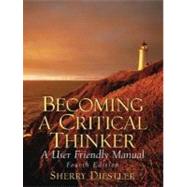
| For students | |
| Study Guide Modules contain multiple choice and true false quizzes, essay questions, and other features designed to help students with self-study | |
| Reference Modules provide the opportunity to quickly reach information on the Web that relates to the content in the text | |
| Communication Modules include tools such as Live Chat and Message Boards to facilitate online collaboration and communication | |
| Personalization Modules include our enhanced Help feature that contains a text page for browsers and plug-ins | |
| For instructors | |
| The Syllabus Manager tool provides an easy-to-follow process for creating, posting, and revising a syllabus online that is accessible from any point within the companion website | |
| The Companion Website makes integrating the Internet into your course exciting and easy | |
| Join us online and enter a new world of teaching and learning | |
| Table of Contents provided by Publisher. All Rights Reserved. |
The New copy of this book will include any supplemental materials advertised. Please check the title of the book to determine if it should include any access cards, study guides, lab manuals, CDs, etc.
The Used, Rental and eBook copies of this book are not guaranteed to include any supplemental materials. Typically, only the book itself is included. This is true even if the title states it includes any access cards, study guides, lab manuals, CDs, etc.